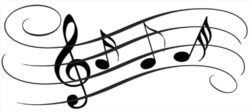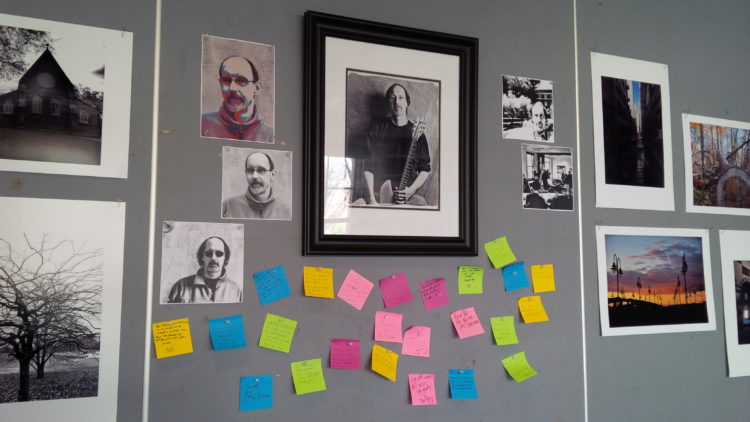
Notes on Our March 31 Program
How Mozart felt about one of his very final works, how an “American” symphony was born in New York City, and what a tonsillectomy (!) had to do with a famous concerto. Knowing just a little bit more about the music – and what to listen for – can make a concert even more enjoyable! Here’s some background on the pieces on our March 31 program.
Overture to Die Zauberflöte (The Magic Flute), K. 620
Wolfgang Amadeus Mozart (1756-1791)
The two-act comic opera Die Zauberflöte (The Magic Flute) is one of the final works of Wolfgang Amadeus Mozart. It premiered in Vienna on September 30, 1791, just two days after Mozart completed it, and just weeks before his death that December. The opera enjoyed quick success, and Mozart wrote excitedly to wife Constanze in October 1791, “You can see how this opera is becoming more and more esteemed.” The opera and its overture remain popular staples of the stage and orchestral repertoire.
The story’s young prince, Tamino, sets out on a quest to win the hand of a princess, Pamina. Along the way, he feels the tug between the Queen of the Night, representative of darkness and repression of knowledge, and Sarastro, a benevolent monarch who rules based on wisdom and reason. This plot bears symbols of Freemasonry, in which members progress through levels of self-understanding in a quest for knowledge. Both the composer and librettist Emanuel Schikaneder were Masons.
The overture begins with a short, slow introduction, with orchestra intoning a series of three powerful chords. These chords, which return in the middle of the overture and in the opera’s Act II, are believed to be related to Masonic ritual.
Listen here to the Vienna Philharmonic perform the Magic Flute overture in 2006.
Cello Concerto in E minor, Op. 85
Sir Edward Elgar (1857-1934)
While Sir Edward Elgar’s Cello Concerto has become of the most frequently performed in the repertoire, it was not an immediate success. Elgar had been asked to compose a cello concerto as early as 1900. After regaining consciousness from tonsil surgery in the spring of 1918, the 61-year-old Elgar asked for a pencil and paper, and then jotted down the notes that would become the work’s first theme.
Most of the work was composed during the summer of 1919, the last summer Elgar would spend with his beloved wife Alice. Elgar’s own illness and age, his wife’s failing health, and post-Great War uncertainty and disillusionment are channeled into the concerto’s four movements, starting with the cello’s dramatic opening recitative. The mood marks a sharp contrast from Elgar’s previous works; for example, the bombastic Pomp and Circumstance marches.
Elgar himself conducted the concerto’s premiere by the London Symphony Orchestra on October 26, 1919, with Felix Salmond as the soloist. Elgar was not granted enough rehearsal time, versus the rest of the program conducted by music director Albert Coates, and Elgar even suggested withdrawing the work. Forging ahead for Salmond’s sake, the work had a rocky, muddled debut. Alice Elgar died the following April, and the Cello Concerto would be Elgar’s final work of consequence.
Symphony No. 9 in E minor, Op. 95, From the New World
Antonin Dvorak (1841-1904)
The Czech composer Antonin Dvorak wrote his New World Symphony while living in New York, and the piece premiered with the New York Philharmonic at Carnegie Hall in December 1893.
Passionate about his homeland and its native folk music, Dvorak made his way to the United States in 1892 at the behest of a wealthy arts patron, to direct a music conservatory. Dvorak’s writings indicate that during that time he found inspiration in an imagination of Native American traditions such as those sketched in Henry Wadsworth Longfellow’s poem The Song of Hiawatha, and, especially, African-American spirituals.
Dvorak was introduced to those spirituals by a young black student, Henry Burleigh, who would become a prominent composer in his own right. Dvorak was quoted in 1893 saying that in the melodies, “was all that is needed for a great and noble school of music. They are pathetic, tender, passionate, melancholy, solemn, religious, bold, merry, gay, or what you will. It is music that suits itself to any mood or any purpose.” Themes in the New World Symphony’s first and second movements are evocative of, “Swing Low, Sweet Chariot,” and “Goin’ Home,” and Dvorak would encourage Burleigh, the grandson of a slave, and other composers to preserve similar melodies in their own works.
As early as its premiere, the symphony was described as a reflection of America’s melting-pot society. Leonard Bernstein, in a lecture deconstructing the work in the 1950s, identified themes of French, German, Scottish and Chinese origins. The sounds of Dvorak’s Bohemian homeland, however, like the dance of the third movement’s Trio section, are often interpreted as the composer’s homesickness. Dvorak left the United States in 1895 and returned to Prague, but his New York symphony, would long remain a favorite among orchestras in the New World and Old World.
Listen here to the New York Philharmonic perform New World in 2016.
Enigma Variations on an Original Theme, Op. 36 (IX. Nimrod)
Sir Edward Elgar (1857-1934)
Performed in memory of NIHCO Founder Gary Daum
Elgar’s Variations on an Original Theme, or the Enigma Variations, debuted in London in June 1899. Of the 14 variations on Elgar’s theme, each a sketch of someone close to the composer, Variation IX: Nimrod, is undoubtedly the most famous, and was composed with Elgar’s friend Augustus J. Jaeger in mind. Nimrod refers to an Old Testament patriarch described as “a mighty hunter before the Lord,” and Jäger is German for hunter. Jaeger, music editor for the London publisher Novello & Co., often offered Elgar artistic guidance and encouragement, and the movement is meant to evoke a warm conversation between longtime friends.
The orchestra’s performance of this work is dedicated to the memory of NIHCO founder Gary Daum, who passed away on February 2, 2019. Gary founded the NIHCO in 1996 as an adjunct to his activities on the chaplain’s Sunday program at the NIH Clinical Center. It started as a sing-along of parts of The Messiah with string accompaniment, and eventually grew to a full Messiah sing-along at NIH’s Masur Auditorium. This continued until September 11, 2001, when all access to the NIH Campus was cut off. Gary and the board worked tirelessly to find alternate sites for rehearsals and the orchestra concerts. Georgetown Prep provided the venue for many years, in exchange for the orchestra brass playing the faculty Christmas celebration and the Prep graduation.
Gary wrote a memorial orchestra and vocal piece for 9/11 called Psalm 9:11, performed on several occasions in Montgomery County. He also arranged several works by Handel and others for strings, brass, or full orchestra. He performed with other Prep staff and orchestra members at annual gatherings performing Dylan, The Beatles, and a host of other groups. He will be sorely missed as our founder, organizer and, until recently, web guru.
